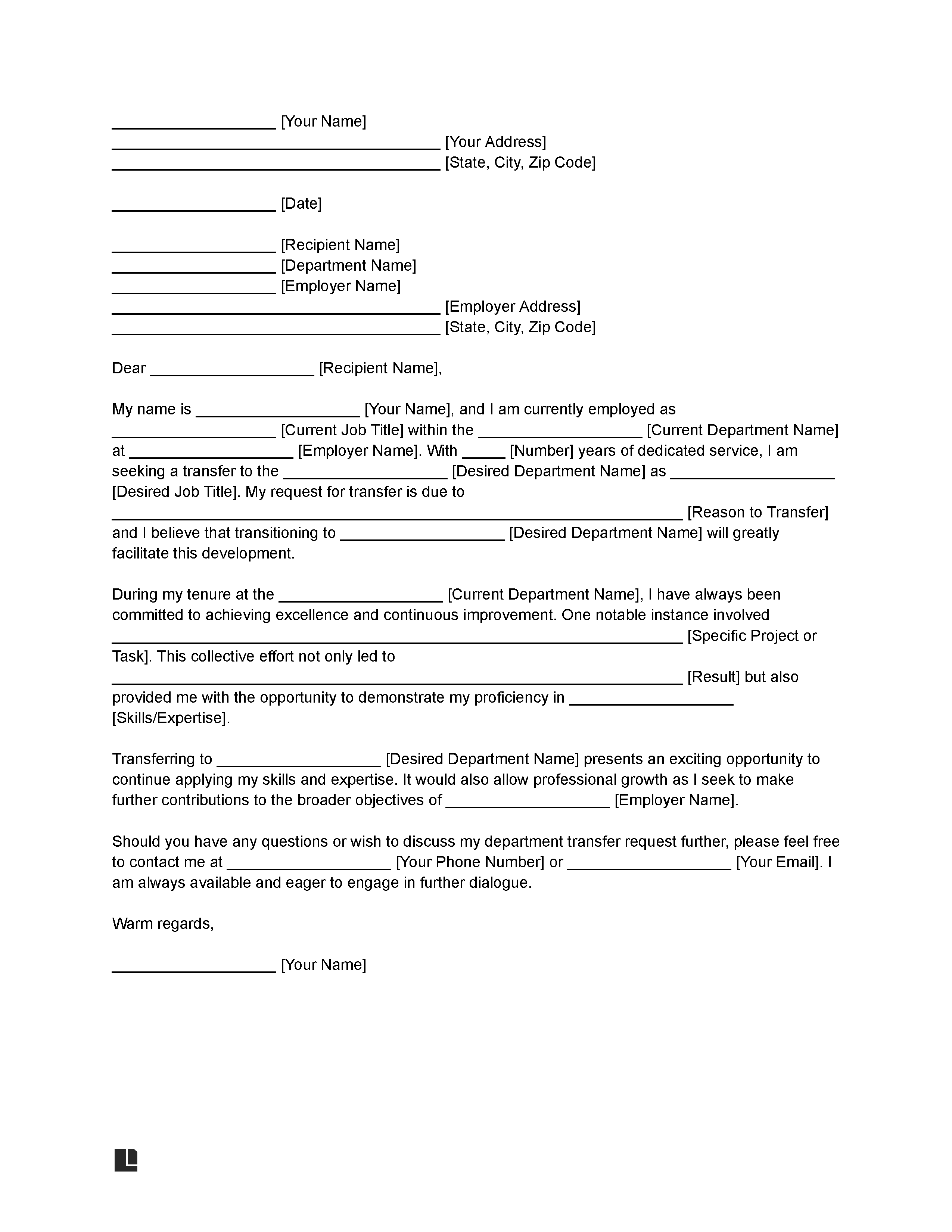A transfer department letter of intent is a structured request from an employee to management, seeking to relocate within the organization due to dissatisfaction with their current role or an impending move. Such letters should gracefully argue the mutual benefits of the transfer, considering any contractual obligations. They serve both as a formal proposal for relocation and a summary of the employee’s achievements deserving of a new opportunity.
This document is essential for employees aiming to evolve professionally or relocate for personal reasons while remaining within the same company.
When To Use
There are several reasons someone may want to transfer department/job. including:
- To pursue professional growth within the company.
- Due to personal reasons necessitating a geographical move.
- To align with career goals by shifting roles or departments.
- If there’s dissatisfaction in the current role or work environment.
- When internal opportunities arise that match your skills and aspirations.
How To Write
Step 1 – Contact Information and Date: Start by listing your contact details, including your name, address, phone number, and email at the top. Below this, add the date of writing. Then, address your supervisor or the HR manager by including their name, title, company name, and address.
Step 2 – Formal Greeting: Use a formal salutation, e.g., ‘Dear Ms. Smith,’ to address the recipient professionally.
Step 3—Body of the Letter: Start your letter by stating its purpose, clearly explaining your reasons for wanting a transfer, and highlighting how your move benefits the company by showcasing your achievements and skills.
Step 4 – Conclusion: Thank your superior or the HR department for considering your request. Express appreciation for your current role and team.
Step 5 – Proofreading and CV: Review the letter for any grammatical or spelling errors. Although optional, attaching an updated copy of your CV or a recommendation letter can strengthen your case by highlighting your qualifications and achievements.
Step 6 – Closing: End with a polite closing and your signature.


